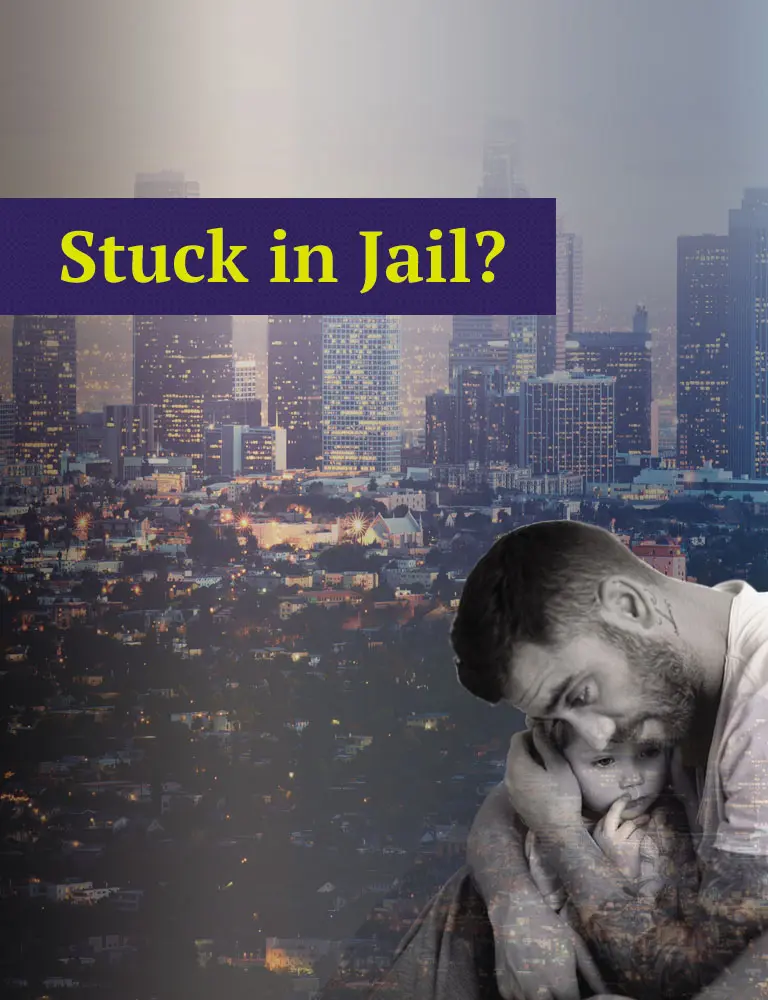How the Bail Process Works in Small vs. Large Counties
An arrest of a loved one is more than just a legal event. It can suddenly turn your world upside down. One moment, life feels normal. The next, you are caught in a storm of uncertainty and worry. The hours that follow bring urgent questions.
How soon can they be released? What steps do I need to take? Who can help me understand this complicated process?
Although the bail process follows a similar pattern throughout the State of California, the experience of navigating it can differ greatly. The size of the county where the arrest happens plays a large role in how fast things move, how much information you can get, and the kind of support available. These differences can make the situation feel either overwhelming or manageable during one of the hardest moments you may face.
Understanding how bail works in both small and large counties can give you clearer expectations and help you approach this challenge with more confidence.
What Happens After an Arrest
Once someone is arrested, they are taken to a local jail for booking. This includes fingerprinting, documentation, a background check, and the filing of charges. After that, bail is set based on the severity of the offense and the county’s bail schedule. The person can be released if bail is paid in full or if a bail bond is arranged.
These steps sound simple in theory, but in reality, the process often looks very different depending on the county. Some counties are small, with a few arrests a day and a single courthouse serving the area. Others are massive, with dozens of cases processed at the same time and multiple agencies involved.
Processing Time Can Depend on the County
In smaller counties, there is usually less volume. Fewer arrests mean faster booking, shorter wait times for bail to be set, and more opportunity for staff to explain what is going on. In many cases, people are released within a few hours, especially for non-violent or first-time offenses. Some families are even able to speak directly with jail staff, confirm bail amounts quickly, and wait at the jail for their loved one’s release.
In large counties, things often move more slowly. High-volume areas like Los Angeles, Orange, or Alameda have crowded booking areas and longer backlogs. It can take several hours just to get fingerprints processed. In some situations, your loved one may be moved from a local holding area to a central facility, which adds more waiting. Even after bail is posted, release can take 12 to 24 hours, depending on how busy the facility is.
Communication Can Be Challenging
Smaller counties tend to offer a more personal experience. You might speak with the same person at the jail more than once. There is a greater chance of getting updates directly from someone on-site. In these environments, families often feel like they can ask questions and be heard.
In large counties, communication is more difficult. Many facilities rely on automated phone lines. You may be transferred several times just to confirm where someone is being held. Getting information about court times or bail amounts can feel frustrating and unclear. People often describe feeling lost in the process, not because staff don’t care, but because there are simply too many people and too few resources.
When this happens, having someone who understands the system, like a defense attorney or experienced bail professional, can make all the difference. You need someone who can help you cut through the confusion and provide accurate updates.
Bail Schedules and Court Access Vary
Every California county uses a bail schedule to assign amounts based on the charges. The schedules are public and fairly consistent, but how those amounts are applied can vary.
In smaller counties, judges and magistrates may be more willing to consider the personal circumstances of the person arrested. They may adjust bail during the first hearing if there is strong community support, stable employment, or a low risk of flight.
In large counties, the process tends to be more rigid. Courts move quickly, and bail is often assigned strictly according to the schedule unless an attorney is present to argue for a reduction. With so many cases to handle, there is little time for individual discussion. That can leave families feeling powerless or rushed during critical moments.
Access to the court itself can also be easier in smaller counties. Courthouses are often close to the jail, easier to park at, and less crowded. In major metro areas, traffic, distance, and security procedures can cause delays or confusion. Even getting to a courtroom can feel like a process in itself.
Jail Conditions Can Shape the Experience
Another major difference between small and large counties is the condition of the jails. In smaller areas, jails tend to be quieter and less crowded. While every facility has rules and structure, the overall environment may feel less chaotic. When fewer people are moving through the system, there is often more time for staff to explain what is happening.
In large counties, overcrowding is common. Holding cells may be full. Staff members are stretched thin. The conditions may be more stressful for the person in custody and more frustrating for their family members on the outside. Even if the bail process begins right away, the environment itself can cause additional emotional strain.
The Emotional Toll Feels Different
No matter where the arrest takes place, the emotional impact is real. Families feel fear, worry, and pressure to act quickly. In smaller counties, the process may feel more personal. Friends and relatives might live nearby. The court staff may recognize people from the community. Even these small details can help ease the burden.
In larger counties, the distance—both literal and emotional—can be harder to manage. Driving long hours, waiting in unfamiliar buildings, or hearing only automated messages can add to the anxiety. People often describe feeling invisible, like no one is telling them what is really going on.
It is important to acknowledge that these feelings are valid. You are not alone. Many families have walked through this before, and there are people who can guide you through it.
Finding Clarity in a Complicated System
The size of the county can significantly shape the bail experience. Smaller counties often allow for faster processing, easier access to information, and a more human connection. Larger counties, with their busy facilities and rigid systems, can feel overwhelming, especially for those unfamiliar with the process.
Regardless of where the arrest occurs, knowing what to expect can help you feel more prepared. Understanding the differences in timing, communication, and court procedures makes it easier to support the person you care about. Most of all, it reminds you that this moment, however painful, is something you can navigate with the right information and support.







